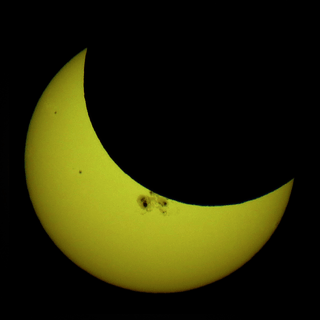Solar eclipse of August 10, 1915
An annular solar eclipse occurred on August 10, 1915. A solar eclipse occurs when the Moon passes between Earth and the Sun, thereby totally or partly obscuring the image of the Sun for a viewer on Earth. An annular solar eclipse occurs when the Moon's apparent diameter is smaller than the Sun's, blocking most of the Sun's light and causing the Sun to look like an annulus (ring). An annular eclipse appears as a partial eclipse over a region of the Earth thousands of kilometres wide. Annularity was visible from the Pacific Ocean, with the only land being Haha-jima Group in Japan, where the eclipse occurred on August 11 because it is west of International Date Line.
| Solar eclipse of August 10, 1915 | |
|---|---|
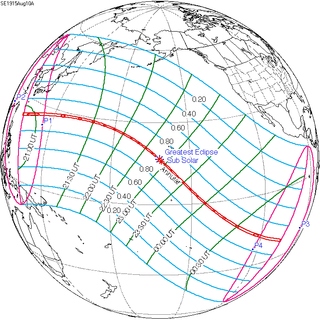 Map | |
| Type of eclipse | |
| Nature | Annular |
| Gamma | 0.0124 |
| Magnitude | 0.9853 |
| Maximum eclipse | |
| Duration | 93 sec (1 m 33 s) |
| Coordinates | 16.4°N 161.4°W |
| Max. width of band | 52 km (32 mi) |
| Times (UTC) | |
| Greatest eclipse | 22:52:25 |
| References | |
| Saros | 134 (38 of 71) |
| Catalog # (SE5000) | 9316 |
Related eclipses
Solar eclipse 1913–1917
This eclipse is a member of a semester series. An eclipse in a semester series of solar eclipses repeats approximately every 177 days and 4 hours (a semester) at alternating nodes of the Moon's orbit.[1]
| Solar eclipse series sets from 1913–1917 | ||||
|---|---|---|---|---|
| Descending node | Ascending node | |||
| 114 | August 31, 1913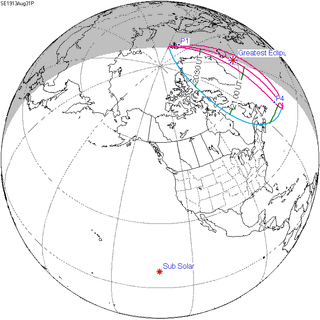 Partial |
119 | February 25, 1914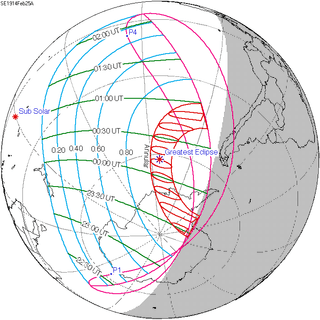 Annular | |
| 124 | August 21, 1914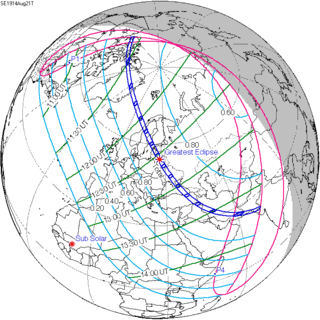 Total |
129 | February 14, 1915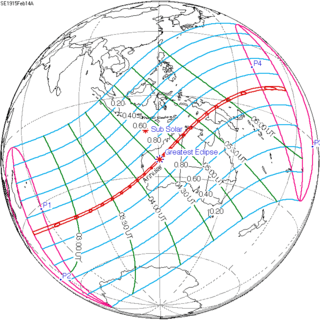 Annular | |
| 134 | August 10, 1915 Annular |
139 | February 3, 1916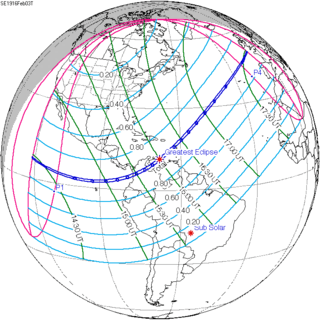 Total | |
| 144 | July 30, 1916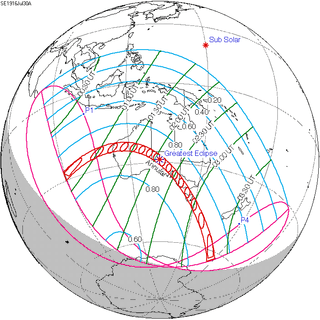 Annular |
149 | January 23, 1917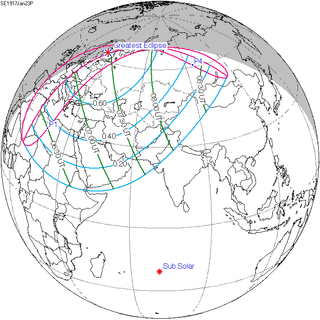 Partial | |
| 154 | July 19, 1917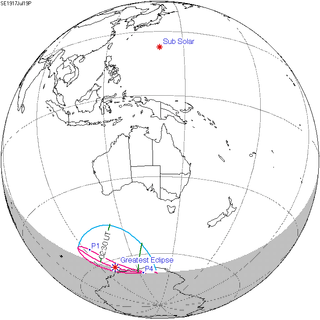 Partial | |||
Saros 134
It is a part of Saros cycle 134, repeating every 18 years, 11 days, containing 71 events. The series started with partial solar eclipse on June 22, 1248. It contains total eclipses from October 9, 1428 through December 24, 1554 and hybrid eclipses from January 3, 1573 through June 27, 1843, and annular eclipses from July 8, 1861 through May 21, 2384. The series ends at member 71 as a partial eclipse on August 6, 2510. The longest duration of totality was 1 minutes, 30 seconds on October 9, 1428. All eclipses in this series occurs at the Moon’s descending node.[2]
| Series members 32–48 occur between 1801 and 2100: | ||
|---|---|---|
| 32 | 33 | 34 |
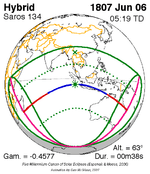 June 6, 1807 |
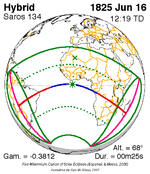 June 16, 1825 |
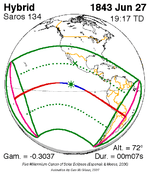 June 27, 1843 |
| 35 | 36 | 37 |
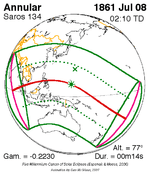 July 8, 1861 |
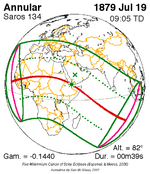 July 19, 1879 |
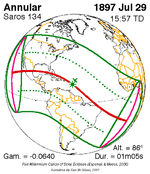 July 29, 1897 |
| 38 | 39 | 40 |
 August 10, 1915 |
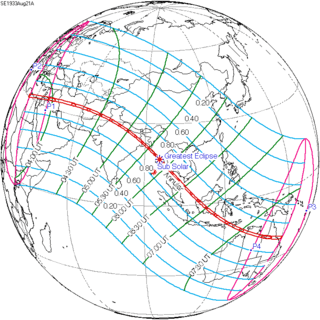 August 21, 1933 |
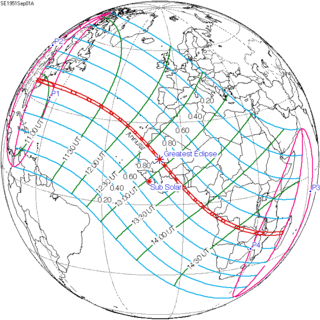 September 1, 1951 |
| 41 | 42 | 43 |
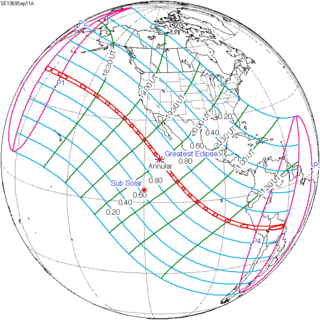 September 11, 1969 |
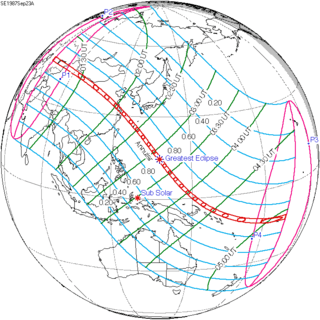 September 23, 1987 |
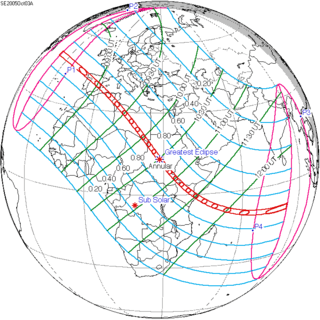 October 3, 2005 |
| 44 | 45 | 46 |
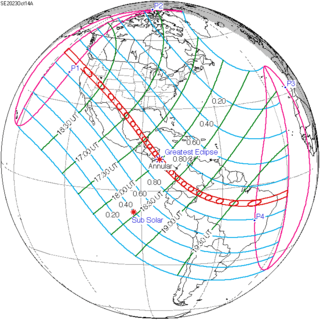 October 14, 2023 |
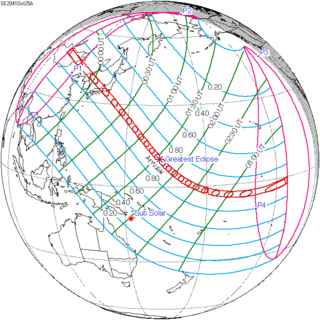 October 25, 2041 |
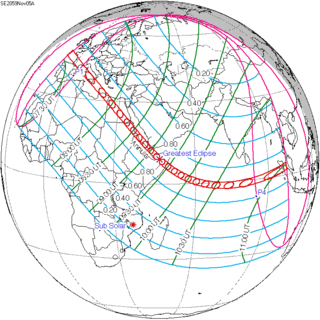 November 5, 2059 |
| 47 | 48 | |
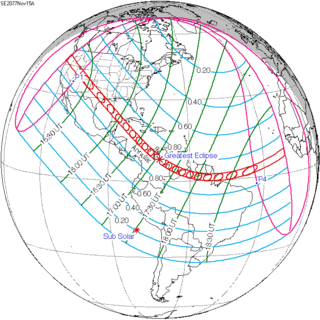 November 15, 2077 |
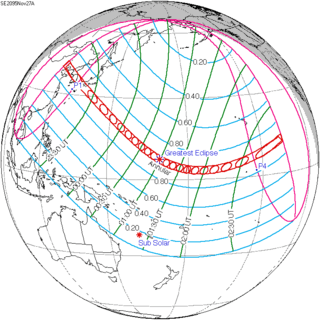 November 27, 2095 | |
Tritos series
This eclipse is a part of a tritos cycle, repeating at alternating nodes every 135 synodic months (≈ 3986.63 days, or 11 years minus 1 month). Their appearance and longitude are irregular due to a lack of synchronization with the anomalistic month (period of perigee), but groupings of 3 tritos cycles (≈ 33 years minus 3 months) come close (≈ 434.044 anomalistic months), so eclipses are similar in these groupings.
| Series members between 1901 and 2100 | |||
|---|---|---|---|
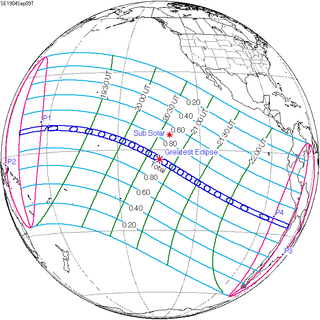 September 9, 1904 (Saros 133) |
 August 10, 1915 (Saros 134) |
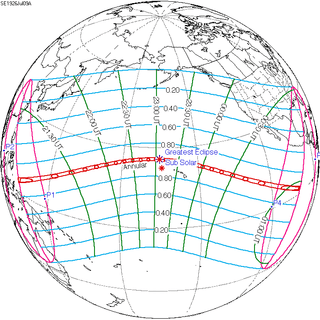 July 9, 1926 (Saros 135) | |
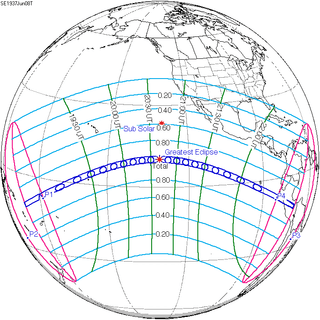 June 8, 1937 (Saros 136) |
 May 9, 1948 (Saros 137) |
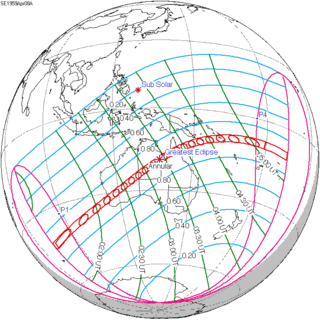 April 8, 1959 (Saros 138) | |
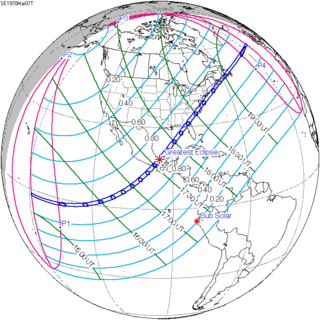 March 7, 1970 (Saros 139) |
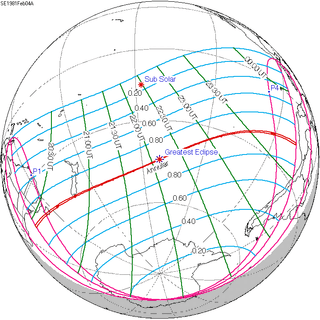 February 4, 1981 (Saros 140) |
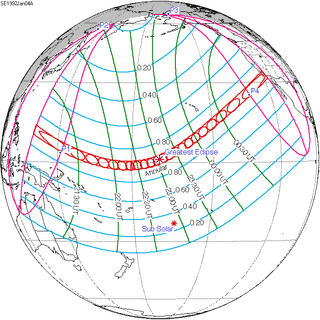 January 4, 1992 (Saros 141) | |
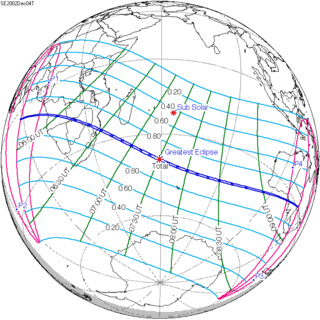 December 4, 2002 (Saros 142) |
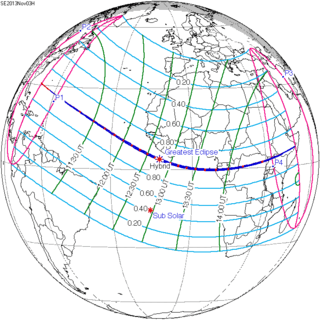 November 3, 2013 (Saros 143) |
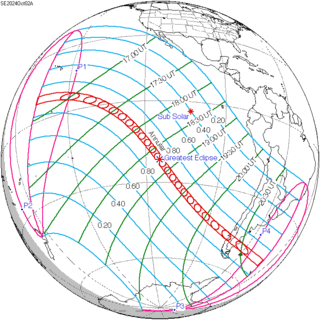 October 2, 2024 (Saros 144) | |
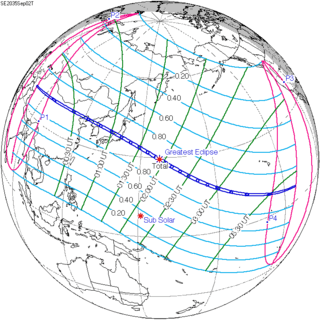 September 2, 2035 (Saros 145) |
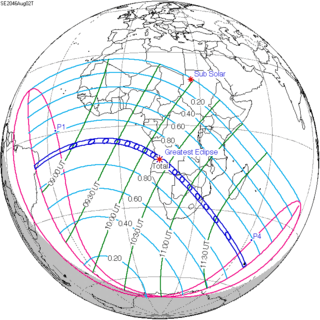 August 2, 2046 (Saros 146) |
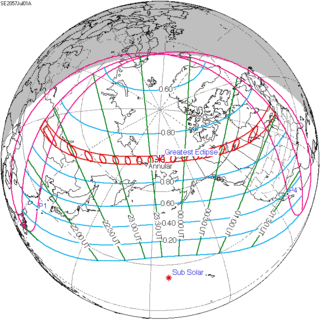 July 1, 2057 (Saros 147) | |
 May 31, 2068 (Saros 148) |
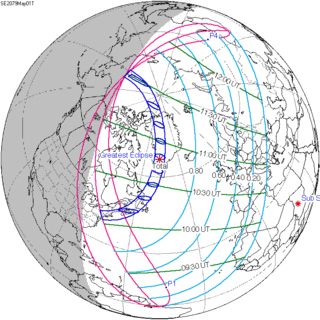 May 1, 2079 (Saros 149) |
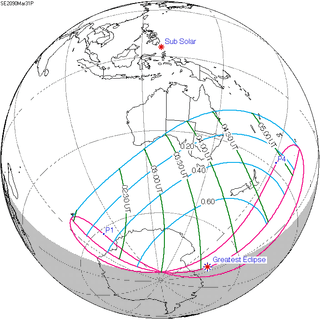 March 31, 2090 (Saros 150) | |
Notes
- van Gent, R.H. "Solar- and Lunar-Eclipse Predictions from Antiquity to the Present". A Catalogue of Eclipse Cycles. Utrecht University. Retrieved 6 October 2018.
- http://eclipse.gsfc.nasa.gov/SEsaros/SEsaros134.html
References
- Earth visibility chart and eclipse statistics Eclipse Predictions by Fred Espenak, NASA/GSFC
.jpg)
